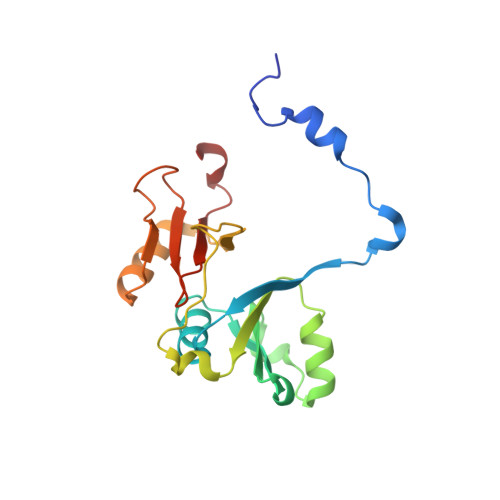The identification of an osteoclastogenesis inhibitor through the inhibition of glyoxalase I
Kawatani, M., Okumura, H., Honda, K., Kanoh, N., Muroi, M., Dohmae, N., Takami, M., Kitagawa, M., Futamura, Y., Imoto, M., Osada, H.(2008) Proc Natl Acad Sci U S A 105: 11691-11696
- PubMed: 18695250
- DOI: https://doi.org/10.1073/pnas.0712239105
- Primary Citation of Related Structures:
2ZA0 - PubMed Abstract:
Osteoclasts, bone-resorptive multinucleated cells derived from hematopoietic stem cells, are associated with many bone-related diseases, such as osteoporosis. Osteoclast-targeting small-molecule inhibitors are valuable tools for studying osteoclast biology and for developing antiresorptive agents. Here, we have discovered that methyl-gerfelin (M-GFN), the methyl ester of the natural product gerfelin, suppresses osteoclastogenesis. By using M-GFN-immobilized beads, glyoxalase I (GLO1) was identified as an M-GFN-binding protein. GLO1 knockdown and treatment with an established GLO1 inhibitor in osteoclast progenitor cells interfered with osteoclast generation, suggesting that GLO1 activity is required for osteoclastogenesis. In cells, GLO1 plays a critical role in the detoxification of 2-oxoaldehydes, such as methylglyoxal. M-GFN inhibited the enzymatic activity of GLO1 in vitro and in situ. Furthermore, the cocrystal structure of the GLO1/M-GFN complex revealed the binding mode of M-GFN at the active site of GLO1. These results suggest that M-GFN targets GLO1, resulting in the inhibition of osteoclastogenesis.
Organizational Affiliation:
Antibiotics Laboratory, Chemical Biology Department, and Biomolecular Characterization Team, Advanced Technology Support Division, Advanced Science Institute, RIKEN, 2-1 Hirosawa, Wako-shi, Saitama 351-0198, Japan.
















